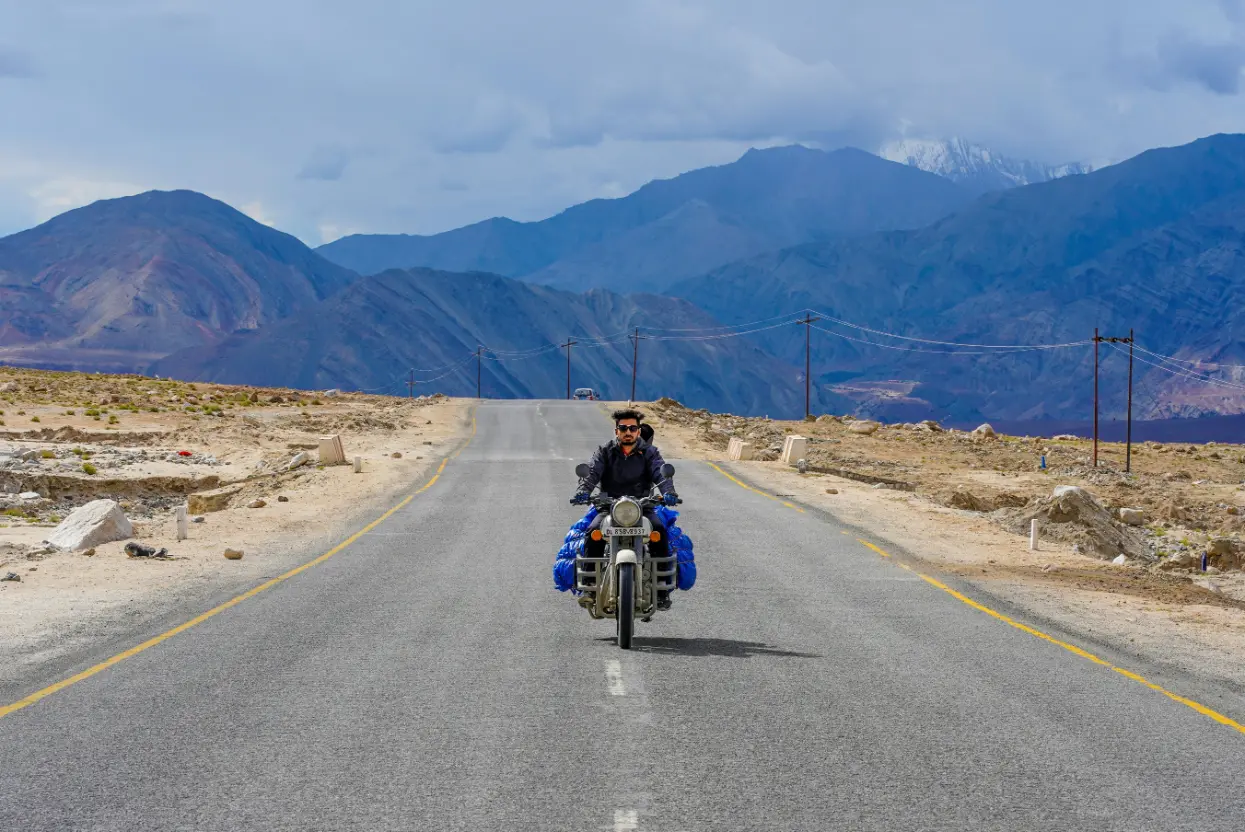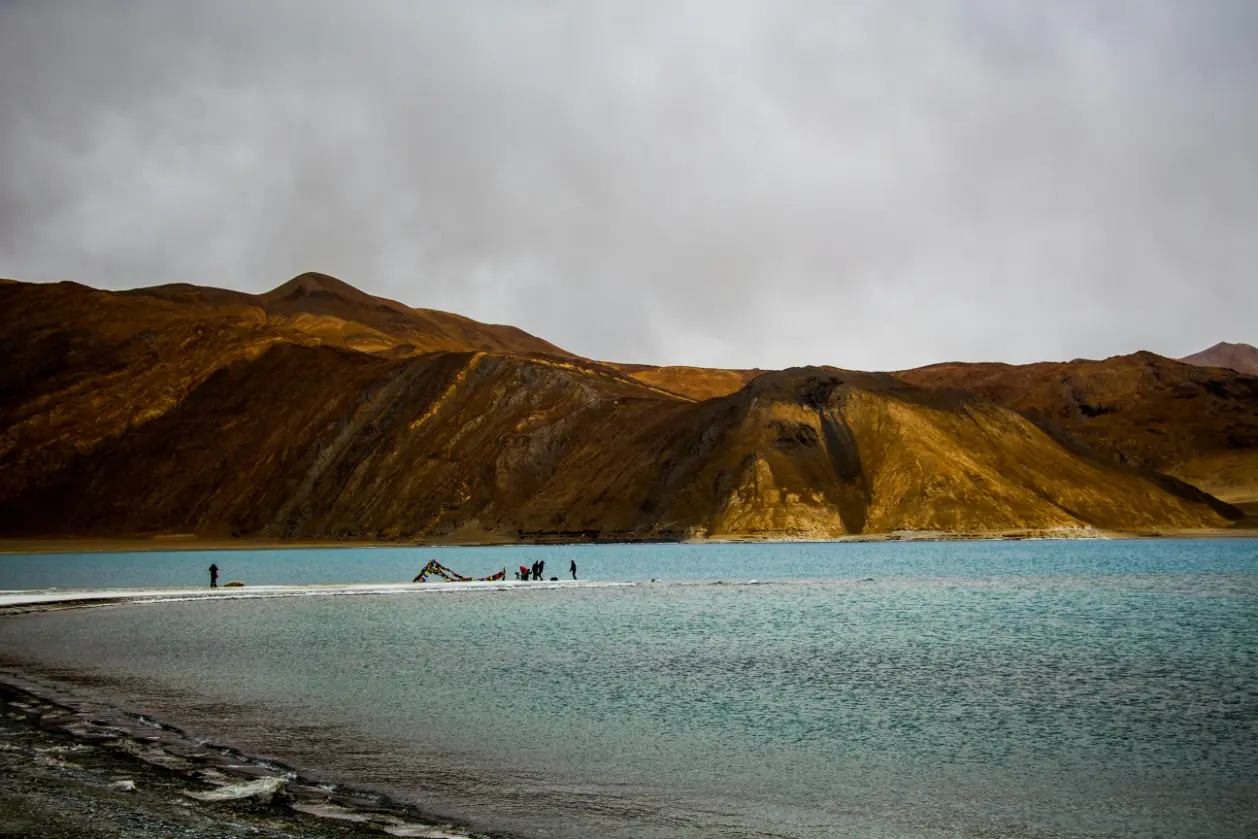Subscribe for more updates!
Stay updated with our latest design insights by entering your email below.

If there’s one part of India that feels like it belongs to another planet, it’s Ladakh. Landlocked between the Himalayas and the Karakoram, this is not a place you “visit” in a casual sense. Ladakh demands something of you, your breath (quite literally at 11,000 feet above sea level), your patience, and your willingness to be surprised. And in return, it gives you something no five-star city hotel or curated beach resort can ever match: the humbling sense of standing small before nature and history.
Most tourists come in search of the idea of “the last Shangri-La.” Some imagine dramatic trekking routes across snow deserts, others dream of mornings in monasteries where the chants of monks echo against cliffs. Both are real. Both are unforgettable.

Let’s be honest, the romance of high-altitude adventures doesn’t kick in on Day 1. The first thing you feel when you step out of Leh airport is the thin air. Even walking up a flight of stairs can make your heart race like you’ve run a marathon. That’s Ladakh’s way of telling you: slow down. Travelers who rush straight into trekking often pay for it with headaches, dizziness, or worse. The locals always insist that you spend at least two nights in Leh, sipping butter tea, strolling the market, watching prayer flags dance in the wind, before you head higher.
It’s strange, isn’t it? In a world obsessed with speed, Ladakh forces you to pause.

Nowhere else in India does trekking feel as raw as it does here. Forget manicured trails, Ladakh’s trekking routes are closer to pilgrimages. Take the Markha Valley trek, for example. For a week, you’re walking through barren gorges that suddenly open into fields of barley and willow, past villages that seem untouched by time. At night, you sleep in homestays where families offer you hot tsampa (roasted barley flour) and stories of winters when snow cut them off from the world.
Then there’s Stok Kangri, once considered a “beginner’s” 6,000-meter peak but now closed for conservation. Those who attempted it before often described it as a test of endurance, more mental than physical. Treks like Sham Valley, often called the “baby trek”, are gentler, making them perfect for families who want to experience Ladakh’s landscapes without pushing children (or themselves) to the limit.
What makes Ladakh trekking so different is the silence. You could walk for hours with nothing but the crunch of boots on gravel and the distant murmur of a river. No phone signal, no traffic, no interruptions, just you, your breath, and the mountains.
While trekkers chase summits, seekers find their way to the monasteries. Ladakh’s monasteries are not tourist attractions; they’re living, breathing centers of Buddhism. Thiksey Monastery, rising like a fortress above the Indus Valley, is often compared to Lhasa’s Potala Palace. At dawn, when monks gather for prayers, the air inside fills with the deep drone of horns, the clash of cymbals, and the scent of butter lamps. Even if you don’t understand the rituals, you feel them in your chest.
Then there’s Hemis, the richest monastery in Ladakh, famous for its summer festival where masked dances retell stories of good and evil. Or Alchi, tucked away near the Indus, where centuries-old murals glow with colors that time has not managed to fade.
For foreigners, especially those used to cathedrals or modern temples, there’s something intimate about these monasteries. You’re not separated from the ritual; you sit on the floor, cross-legged, with novices and old monks alike. Sometimes a curious child monk will grin at you mid-prayer, reminding you that spirituality here isn’t stiff, it’s woven into daily life.

People often imagine Ladakh as roughing it out, tents, basic food, and no comfort. That was true twenty years ago. Today, Ladakh surprises even luxury travelers. There are boutique stays like Chamba Camp Thiksey, where you sleep in safari-style tents with four-poster beds, and wake up to views of monasteries framed by snowy peaks. Some luxury Ladakh tours curate journeys where every detail, from acclimatization days to guided monastery visits, is crafted for foreigners who want comfort without missing authenticity.
Still, luxury here doesn’t mean excess. It’s hot showers after a cold trek, Ladakhi meals prepared with care, or a guide who understands the rhythm of the mountains. In a way, it’s luxury redefined, simplicity elevated.

You might think Ladakh is too tough for families with kids, but many foreigners bring children here, seeking something beyond beaches and theme parks. Family tiger tours in Rajasthan may get the spotlight, but in Ladakh, families discover a different kind of adventure. Picture this: your child spotting a golden eagle circling above, or helping monks spin prayer wheels at Spituk Monastery. These are the kinds of travel memories that stick for a lifetime.
Of course, it’s not effortless. The altitude requires care; itineraries need to be slow-paced, and treks chosen wisely. But for those willing to adapt, Ladakh is an education in resilience and wonder, the sort no classroom can replicate.

Long after you’ve left, Ladakh lingers. Maybe it’s the sound of the Indus at night, rushing endlessly through the valleys. Maybe it’s the sight of prayer flags against a cobalt sky. Or maybe it’s just the way the place makes you feel small, not in a diminishing way, but in the way a child feels small standing before something vast and magnificent.
High-altitude adventures here are not about ticking boxes, “trek done, monastery seen.” They’re about giving yourself over to a land that doesn’t care about itineraries. Ladakh changes you, whether you come for trekking, for its Himalayan monasteries, or simply to sit quietly and breathe.
For foreigners seeking India beyond the obvious, Ladakh is both a challenge and a gift. It’s where luxury is not chandeliers but silence, not buffets but butter tea shared with a host family. Whether you arrive for the India Himalayas trekking, for the royal stillness of monasteries, or for the thrill of a high-altitude adventure, you’ll leave carrying something harder to define.
And perhaps that’s the best way to experience Ladakh, not as a checklist destination, but as a place that lives in you long after you’ve gone.